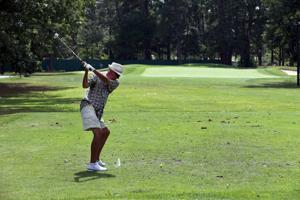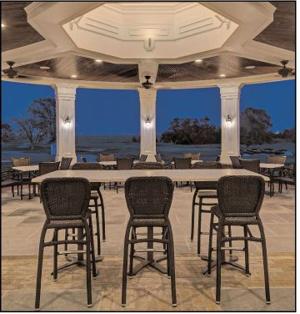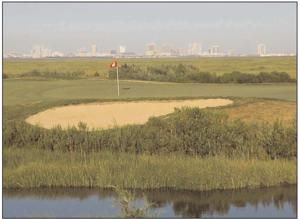Sea
Oaks pros say to ‘envision, then realize success’
By Dave Bontempo- Advice to the average or high-handicap golfer:
when observing sand traps, water and other obstacles to the green, pay them no
mind.
Perhaps that's the Bonicky Blog.
“Much of what concerns the average player is visual intimidation,”
says Jeff Bonicky, the director of operations at Sea Oaks in Little Egg Harbor
Township, which opened in 2000. “The way you combat that is trust. You have to
trust that the club in your hand will reach the yardage you need, and remember
that something that is on the ground, like water, is not in the air. If your
shot is in the air and reaches the yardage number you want it to, you will
clear that water hazard.”
Bonicky's tips are relevant, particularly on the par 3's here. Sea
Oaks has four of them, each requiring a successful shot to clear an obstacle.
“Envision clearing that water or bunker as part of your pre-shot
routine,” he says. “Much of the knack of achieving a good shot is picturing one
in the first place. The more you do that, the better it will be for you.”
Sea Oaks offers six tee boxes in the neighborhood of 6,900 yards
for advanced players, 6,300 yards for most and 5,100 yards for higher-handicap
golfers.
The fourth begins one's journey with the par-3's. It plays about
155 yards from the mid tees and demands accuracy amid “a valley of sand traps,”
Bonicky says. The shot carries uphill and must have both accuracy and distance.
If the flag is placed left, players must flirt with greenside bunkers to reach
the putting surface or play safe to the right and chip on. That decision could
hinge on how well one is hitting the ball that day.
Another “visual intimidation” lurks on the seventh. It is a par-3,
only 146 yards from the mid tees. But there is a mammoth waste land on the
left. A straight shot or even one that lands a little right should be safe.
Twelve stands 195 yards from the mid tees and demands a forced
carry over waste land. A tee shot that reaches this green is good enough to make
one's day. Fourteen, meanwhile, entails battling water.
Sea Oaks blends a nice collection of holes with a unique marketing
tool, an on-premise hotel. The Inn at Sea Oaks encourages stay-and-play
packages.
“We receive a lot of repeat business from vacationers who make
this the place they want to come to play every year,” Bonicky says. “We like to
show them a day of relaxed golf. This is a course you come to to get away from
what's going on the rest of the time in your life.”
The course layout appears to reflect that philosophy. Sea Oaks
opens casually, unfolding a wide-open front nine that is forgiving in nature.
The objective is to get distance off the tee. Generous fairways give players a
fighting chance to score if they drive the ball well.
Take nine, for instance. It’s an uphill, 545-yard layout that
plays close to 600 yards because of the slope. The second shot is the key
component. Players must clear a 50-yard area containing mounded moguls with
rough to reach the flat area for an approach. A ball buried inside the gap will
usually require a punch-out shot. Long hitters who are close to the green after
two shots have the added luxury of trying to place their third shot close to
the pin. The green is two-tiered.
Players must adjust and tighten up for the back nine. Fairways
narrow, placement becomes more significant and water becomes more prominent.
Tap-ins: Sea Oaks offers a rarity — consecutive par 5's on the 9th
and 10th. It should help pace of play. The course also has memberships and
junior leagues.
Read more...










